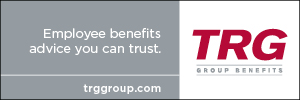Connecting the Dots in Your Social Network
By David Creelman
Which people are most connected within your organization? Who are the knowledge brokers that others go to for help? Which people are at the centre of the action? Is it likely to be your high potentials? Apparently not.
Dr. Nancy Tennant, VP of innovation at Whirlpool, studied social networks within the company and found little overlap between those people who were highly connected (nodal jobs) and those identified as high potential.
At first sight this is a little disconcerting. It may be inconsequential; perhaps Bob the mailroom boy shows up as well-connected simply because he interacts with so many people. Yet it could also indicate that management has failed to identify some key people who are making things happen in the company.
Susan Meisinger, an HR author and consultant, argues that understanding the networks between employees is important. Thanks to social technology and the culture that comes along with that, people are more networked than ever. There is less reliance on the hierarchy to get work done and employees are more inclined to connect directly to the people with the knowledge or resources they need. Management is often unaware of how the organization is actually operating—hence the value in mapping out those informal connections.
Analysing your networks
To identify nodal jobs you need to find out who is connecting to whom and then map that out. The process is called social network analysis and the map is called a sociogram. Simply look at the sociogram and the nodal jobs with the most connections will stand out.
There is software to generate these sociograms once you have the data; getting the data can be a little bit tricky. One approach is to survey employees about who they connect to most. Another is to track who is emailing whom; this requires the least labour but raises privacy concerns. If Mary in accounting is frequently emailing Joe in logistics it may not be because of a critical operational need; it may merely be indicate an office romance. A compromise might be to generate the lists automatically from email; but allow each individual to scrub the data before it is entered into the reports.
While the process of gathering the data may be a cumbersome, it is not the sort of analysis one needs to do every year. The idea is to get a fresh perspective on the organization and doing so once every three to five years should be enough.
What do you do with this information?
There is something to be said for just creating the sociogram and seeing if anything interesting pops out. Still, when dealing with data we get better outcomes if we ask in advance “What decisions are we trying to make?” and “What questions are we trying to answer?”
When it comes to social network analysis the questions we are trying to answer include:
- Are there key people in the organization we have overlooked? If the sociogram identifies previously hidden talent then we need to consider what we are doing to retain them and whether we are making best use of their skills.
- Are there key jobs in the organization whose importance we have overlooked? In this case we have to ask if we have sufficiently high-powered talent in the job and if we have backup to fill it if the incumbent leaves.
- Are there connections that should be there that are missing? In which case we need to address the missing links.
Not every nodal job is significant and paucity of connections may not be problem; it’s a matter of judgement, but you can’t even begin to make those judgments until you have the information.
Fresh Eyes
The more we know about how work really gets done in the organization the better positioned we are to make wise decisions about job design, talent and processes. The ability to map who contacts whom with social network analysis provides fresh insights.
It can be hard to find time and budget for these kinds of discretionary activities and I am not suggesting this sort of mapping necessarily become a routine activity. Yet we always need fresh perspectives and new triggers for discussion. HR should push to do these sort of exploratory activities. Why not put a pilot of social networking analysis in next year’s business plan?
David Creelman is CEO of Creelman Research, providing writing, research and speaking on human-capital management. He works with a variety of academics, think tanks, consultancies and HR vendors in Canada, the U.S., Japan, Europe and China. David can be reached at dcreelman@creelmanresearch.com.








